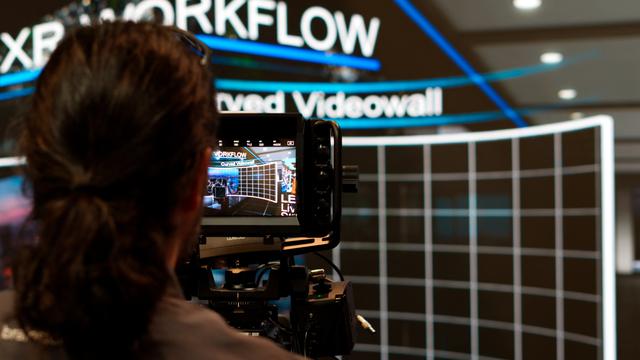Brainstorm Guide to XR
Click here to get this free white paper from Brainstorm.
Get the Guide
XR is one of the trendiest and most recent flavours of Virtual Reality, especially when combined with LED video walls.
Virtual sets and Augmented Reality (AR) have been around for decades now, and the Virtual Reality concept has diversified with the arrival of new display technologies like LED video walls, that provide alternatives to traditional chroma keying. Recent productions have taken advantage of this technology, and broadcasters are increasingly using it for live shows, but many users still see XR as a diffuse concept associated to video walls. So, what is XR?
As a form of Virtual Reality (VR), Extended Reality (XR) can be defined as the combination of real and virtual environments. If we include interactive content consumption in the equation we should add any human-machine interactions generated by computer technology and wearables, but we will stick to typical broadcast and film content production to make things simpler for the moment.
However, in practical terms for broadcast and film content creation, XR is normally understood as the combination of virtual environments projected in a LED wall, and sometimes LED floors, with real characters on stage, sometimes including other graphic elements in a sort of Immersive Mixed Reality (IMR).

When using LEDs as background/floor, the camera captures the combined image of the background rendering and the characters. However, there is no technical reason why the LEDs can’t be replaced by a Chroma set so, using one method or the other is key for achieving a given result.
There are many applications for LED-based XR production which outperform chroma set production, starting with live virtual sets displayed in the LED walls so not only the audience at home can see it, but also the live audience on a physical show or event can see it.
Also, excluding the need for green sets or chroma keying can be quite interesting for film and drama productions when virtual environments are required rather than physical scenarios and props. On top of that, we can add in-screen Augmented Reality (AR) content that can be shown live, rather than using real-time renders and combine the scene on a separate screen.
But this technology is not a response to any possible VR requirement, as it shows several disadvantages compared to traditional chroma keying. Issues with focus, moiré, delays and many other should be considered before deciding which method (LEDs or chroma keying) is best for our virtual production.
That is why, being at the forefront of virtual technology for the last 30 years both with chroma and LED/projection environments, Brainstorm has produced the comprehensive White Paper Brainstorm Guide to Understanding XR, which aims to clarify concepts about XR technology, its applications, workflows, advantages, and disadvantages.
The Brainstorm Guide to Understanding XR can be downloaded from here: xrguide.brainstorm3d.com.
The above content is sponsor-generated content from Brainstorm. To learn more about sponsor-generated content, click here.
tags
Brainstorm 3D, Extended Reality, virtual, virtual reality, XR Studio
categories
Partner Content




